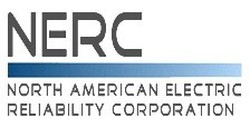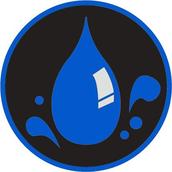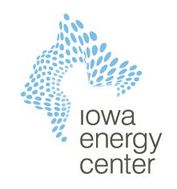 From the March 22, 2016 issue of APPA Public Power Daily By Jeannine Anderson, News Editor Cyber attackers who hit three electric distribution companies in Ukraine in late December — causing 225,000 outages that lasted for a few hours — had sophisticated knowledge of utility systems that allowed them to take advantage of vulnerabilities in supervisory control and data acquisition, or SCADA, networks, says a March 18 report on the attack. It appears that the attackers began their reconnaissance of the utility systems six months or more before the actual attack was carried out on Dec. 23, 2015, but their intrusion into the systems was not detected, according to the report. This enabled them to invade utility control systems and to hit the three utilities with coordinated cyber attacks that were carried out within 30 minutes of each other, the report said. The report, Analysis of the Cyber Attack on the Ukrainian Power Grid, was written by a joint team from the North American Electric Reliability Corp.’s Electricity Information Sharing and Analysis Center, or E-ISAC, and SANS Industrial Control Systems.  IAMU will be hosting the 2016 Plastic Pipe Joining - Fusion & Mechanical - & Operator Qualification Workshop, May 3rd & 4th, 2016. This workshop is designed for gas distribution system fusion technicians and distribution operators who work for municipal utilities or contractors. Annual fusion qualification is required by the Office of Pipeline Safety (49CFR Part 192.285) For more information, and to register, click here. Water Distribution Training & Water Leak Detection/Line Locating Workshops - May 18th & 19th3/28/2016  IAMU will be hosting the 2016 Water Distribution Training and Water Leak Detection/Line Locating Workshops, May 18th & 19th, 2016. 0.6 CEUs will be available each day for Water Distribution. For more information, and to register, click here. Hope to see you there! WECC has implemented a retail mark down lighting program for IAMU members such as Cedar Falls, called Be Bright. Participating Iowa electric utilities help residents make the simple switch to energy-efficient lighting by offering special pricing on ENERGY STAR® qualified CFL and LED bulb purchases. The Iowa Be Bright Program provides an instant rebate structure; there are no coupons to fill out. The channels and retailer mix includes: home improvement, mass merchant, warehouse, hardware, and specialty retailers. This includes national and regional retailers, as well as independents. The allocation of bulbs is based on geographic location of a store within a utility service territory, budget and kWh savings goals.  Do you need help completing the Consumer Confidence Report? If so, this workshop is for you! The goal of the workshop is for each participant to leave with an understanding, or refresher, of what the CCR is and why it needs to be completed. The CCR workshops will be held on the dates/locations below:
Important! Please bring the following items to the workshop:
Hope to see you there!  The Federal Emergency Management Agency (FEMA) has reversed an earlier denial of disaster assistance to one municipal utility in northwest Iowa, Sanborn Municipal Utilities and three rural electric cooperatives. Iowa Governor Terry E. Branstad said that he appreciated FEMA’s willingness to listen to the appeal led by the Iowa Department of Homeland Security and Emergency Management (HSEMD). He also thanked the Iowa congressional delegation for assisting with the effort. An April 2013 ice storm caused millions of dollars in damage to electrical utility lines in five Iowa counties: Dickinson, Lyon, O’Brien, Osceola and Sioux. The damage was so extensive that a Presidential Disaster Declaration was issued on May 6, 2013. On Aug. 30, 2013, FEMA denied the request for funding in the amount of $19 million to restore downed utility lines in those counties. In issuing the denial, FEMA initially said the utilities did not conduct comprehensive laboratory testing to verify the damage was a direct result of the disaster.  Provided by the Iowa Energy Center The Energy Center is excited to announce the publication of the latest edition of its Home Series, the Solar PV Energy Guide. The guide was put together for Iowans interested in installing a solar PV array at their home or business and was prepared in collaboration with Alliant Energy, the Iowa Association of Electric Cooperatives, the Iowa Association of Municipal Utilities and MidAmerican Energy with information from the Office of Consumer Advocate and the Iowa Utilities Board. Topics covered in the book include the basics of solar PV, conducting a site assessment and constructing the array, in addition to other need-to-know information. Specific interest areas include working with electric utility interconnections, and tips for choosing the right installer for your project. When putting together this project, Bill Haman, the Energy Center’s resident Renewable Energy expert, said the main goal was to make Iowans better informed consumers. Haman says, “Solar PV energy has gained in popularity very quickly in the last few years, so we wanted to make sure people were getting the best information they can from a neutral source at the beginning of a project. We hope that this book helps to inform Iowans of their options and makes them more aware of the process.” ABOUT US
The Iowa Energy Center has been actively serving Iowans since 1990. We support economic development, environmental sustainability and social well-being in Iowa through energy innovation, education and entrepreneurship. We are your resource for relevant energy news and updates, upcoming events, competitive grants and funding opportunities. - See more at: http://www.iowaenergycenter.org/2016/03/new-addition-to-home-series-solar-pv-energy-guide/#sthash.9WUWfkWl.dpuf  Owners of emergency generators used in emergency demand response programs, or operated to respond to local reliability, electrical grid voltage, or deviation issues, are required to submit an electronic report to the Environmental Protection Agency (EPA) by March 31, 2016. Owners of emergency engines > 100 horsepower (HP) operated or contractually obligated to be available >15 hours/year for emergency demand response or voltage or frequency deviations, or operated for local reliability must submit an annual report electronically through the Compliance and Emissions Data Reporting Interface (CEDRI) accessed through EPA’s Central Data Exchange at https://www.epa.gov/cdx. The annual report must cover 2015 operations. For more information, go to: http://www3.epa.gov/ttn/atw/icengines/ |
Archives
July 2024
|




 RSS Feed
RSS Feed
